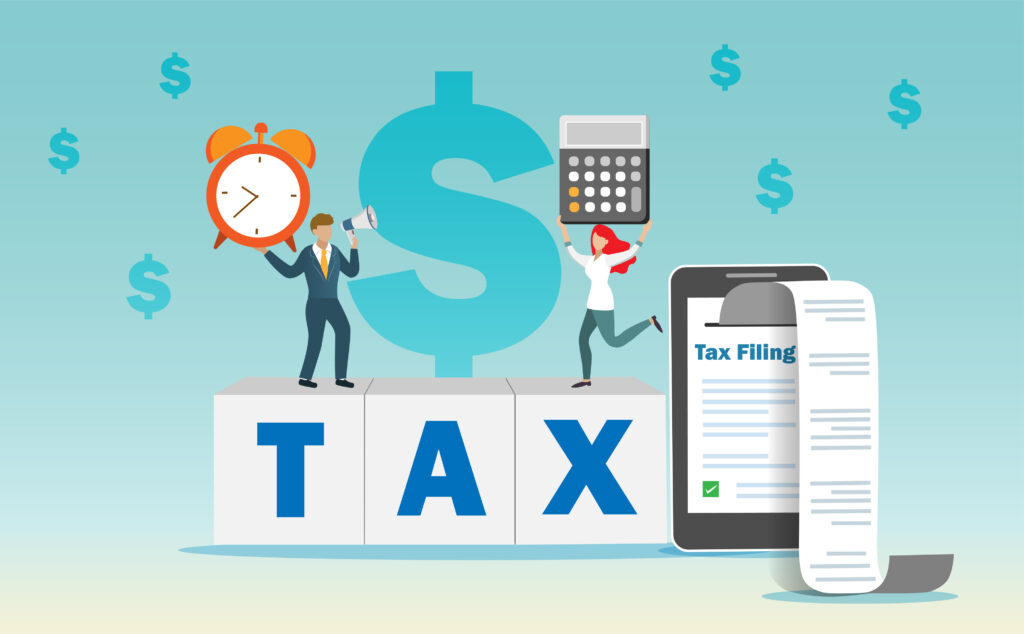When “tax day” is mentioned, most people think of April 15. However, there are some exceptions to this deadline as well as other filing dates for different types of taxpayers. This post will review the various federal tax filing forms and their respective deadlines. The chart below summarizes the most common due dates, followed by further explanations. Note: state and local deadlines may differ from these federal filing dates and should be confirmed with each jurisdiction.
| IRS Form | Calendar Year 2023 Filers | Fiscal Year Filers |
| Form 1065 – Partnerships |
March 15, 2024 | 15th day of third month following the close of entity’s tax year |
| Form 1120-S – S Corporations |
March 15, 2024 | 15th day of third month following the close of entity’s tax year* |
| Form 1120 – C Corporations |
April 15, 2024 | 15th day of fourth month following the close of entity’s tax year |
| Form 1040 – Individuals |
April 15, 2024 | N/A |
| Form 990 Series – Tax-Exempt Organizations |
May 15, 2024 | 15th day of fifth month following the end of entity’s tax year |
| Form 5500 Series – Employee Benefit Plan |
July 31, 2024 | Last day of the seventh month after the plan year ends |
| Form 1065 Extended Return |
September 16, 2024 | Six months from the original due date |
| Form 1120-S Extended Return |
September 16, 2024 | Six months from the original due date |
| Form 1120 Extended Return |
October 15, 2024 | Six months from the original due date* |
| Form 1040 Extended Return |
October 15, 2024 | Six months from the original due date |
| Form 5500 Series Extended Return |
October 15, 2024 | 15th day of third month following the original due date |
| Form 990 Series Extended Return |
November 15, 2024 | Six months from the original due date |
* C corporations with tax years ending June 30 must file by the 15th day of the third month following the close of the entity’s tax year (September 16, 2024), and are eligible for an automatic seven-month extension period
Filings Due 4/15
April 15 is the date when tax returns are typically due for calendar year filers (which applies to most individual taxpayers including employees, retirees, self-employed individuals, independent contractors and gig workers). If April 15 falls on a weekend or holiday, the deadline is moved to the next business day.
Unless an extension request is filed (see below), the April 18 deadline applies to individual income tax returns (Form 1040 or Form 1040-SR) as well as corporate income tax returns (Form 1120) for C corporations that operate on a calendar year. See below for filing deadlines for C corps that do not operate on a calendar year
Other Filing Deadlines
The filing deadline for partnerships (including multi-member LLCs) and S corporations that operate on a calendar year is typically March 15.
Tax returns for partnerships (Form 1065) and S corporations (Form 1120-S) operating on a fiscal year will be due the 15th day of the third month after the end of their fiscal tax year. For C corporations (Form 1120) that do not operate on a calendar year, the filing date is typically the 15th day of the fourth month following the end of the fiscal year (the deadline is April 15 for calendar-year C corporations).
Tax returns for tax-exempt organizations (Forms 990) are due on May 15, 2024. Employee benefit plan tax returns (Forms 5500) are due the last day of the seventh month after the plan year ends unless a request for an extension is filed.
In instances where the due date noted above falls on a weekend or legal holiday, the filing deadline is delayed to the next business day. These due dates apply unless an automatic six-month extension is requested by the original filing due date. See below for details on extensions
Extensions
The tax filing deadline is also the last day to request an extension to file income tax returns. Individual taxpayers should use Form 4868 to apply to extend the filing deadline until October 15, 2024. Corporate taxpayers (C corps, S corps and partnerships) can request a six-month filing extension using Form 7004. Tax-exempt organizations should use Form 8868 to file a request for an automatic extension, and requests to extend the filing deadline for certain employee benefit plans can be made using Form 5558.
There are numerous reasons to extend the filing date, but it is important to note that an extension does not grant a delay for remitting payment. Taxpayers must still pay their estimated taxes due by the original filing dates to avoid late penalties. See below for more information about estimated payments and late penalties and our related post for FAQs related to extensions
Estimated Tax Payments
Taxpayers are expected to pay taxes, on at least a quarterly basis, on the income they have earned. Many individual taxpayers have sufficient amounts withheld by their employers, however, some taxpayers, especially high-earners, those with dual incomes, fluctuating income, or significant passive income may need to make additional estimated tax payments to avoid penalties. Self-employed individuals, independent contractors and gig workers also usually have to make quarterly estimated tax payments are pre-set dates throughout the year. The due dates for 2024 estimated tax payments for individual tax filers are listed below.
| Estimated Tax Payments | Estimated Payment Due Date |
| 1st Quarter | April 15, 2024 |
| 2nd Quarter | June 17, 2024 |
| 3rd Quarter | September 16, 2024 |
| 4th Quarter | January 15, 2025 |
Taxpayers can use Form 1040-ES to calculate anticipated annual income and estimate their tax liability. Rules and details about individual income tax withholding and estimated tax payments for 2024 can be found in IRS Publication 505. Taxpayers who overestimate their tax liability can receive a refund or apply the overage to the following year’s quarterly tax payments. Underestimated amounts are due at the filing deadline.
Late Penalties
There are two main penalties that are incurred by taxpayers who do not file a return and/or pay their taxes due by the deadlines noted above. These fees are levied on a monthly basis, with interest accruing at varying rates. Click here for more details
- Failure-to-file penalty –The IRS charges 5% of the unpaid taxes for each month or part of a month that a tax return is late, not to exceed 25% of the unpaid tax amount. If the return is over 60 days late, additional fees are applied.
- Failure-to-pay penalty –The IRS calculates 5% of the unpaid taxes for each month or part of a month that the tax remains unpaid, not to exceed 25% of the unpaid amount.
If both penalties are applied, the failure-to-file penalty will be reduced by the failure-to-pay penalty amount for that month (for a maximum monthly penalty of 5%). The failure-to-pay penalty is reduced to 0.25% per month for taxpayers on a payment plan during that payment plan schedule. Some penalties may be eligible to be removed or reduced for reasonable cause. Click here for details on penalty relief
Concluding Thoughts
It is important for taxpayers to be aware of what returns they are required to file and when those filings are due. It is also critical to properly estimate and remit quarterly payments in a timely manner to avoid penalties. Contact the GYF Tax professionals at 412-338-9300 if you have questions or need assistance with your tax compliance.






